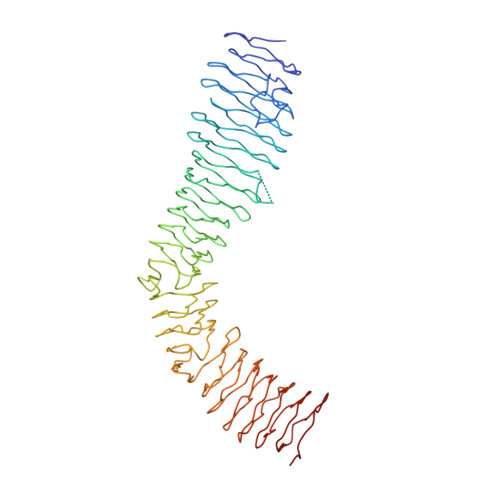The antigen 43 structure reveals a molecular Velcro-like mechanism of autotransporter-mediated bacterial clumping.
Heras, B., Totsika, M., Peters, K.M., Paxman, J.J., Gee, C.L., Jarrott, R.J., Perugini, M.A., Whitten, A.E., Schembri, M.A.(2014) Proc Natl Acad Sci U S A 111: 457-462
- PubMed: 24335802
- DOI: https://doi.org/10.1073/pnas.1311592111
- Primary Citation of Related Structures:
4KH3 - PubMed Abstract:
Aggregation and biofilm formation are critical mechanisms for bacterial resistance to host immune factors and antibiotics. Autotransporter (AT) proteins, which represent the largest group of outer-membrane and secreted proteins in Gram-negative bacteria, contribute significantly to these phenotypes. Despite their abundance and role in bacterial pathogenesis, most AT proteins have not been structurally characterized, and there is a paucity of detailed information with regard to their mode of action. Here we report the structure-function relationships of Antigen 43 (Ag43a), a prototypic self-associating AT protein from uropathogenic Escherichia coli. The functional domain of Ag43a displays a twisted L-shaped β-helical structure firmly stabilized by a 3D hydrogen-bonded scaffold. Notably, the distinctive Ag43a L shape facilitates self-association and cell aggregation. Combining all our data, we define a molecular "Velcro-like" mechanism of AT-mediated bacterial clumping, which can be tailored to fit different bacterial lifestyles such as the formation of biofilms.
- Department of Biochemistry, La Trobe Institute for Molecular Science, La Trobe University, Melbourne, VIC 3086, Australia.
Organizational Affiliation:

















